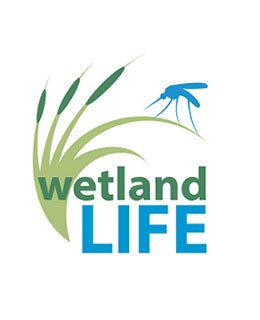Panel chair: Megha Rajguru
Abstracts
Using the Arts and Oral History to Explore Everyday Cultures of Grief During Pandemic Time
DEBORAH MADDEN

This paper highlights ongoing work for a collaborative arts and oral history project located within the Centre for Memory, Narrative and Histories. The project has collected reflexive oral histories from palliative care clinicians and practitioners to contextualise Covid-19 through the lens of the Spanish Flu pandemic of 1918, thus evaluating ‘everyday’ subjective experiences and emotional responses to Covid-19 and its unequal impacts, as well as its differing affective scales related to illness, dying, anticipatory grief and mourning. The presentation reflects on its distinctive methodology, dissemination and wider pedagogical purpose, expressed in a range of affective articulations, such as public history, creative writing and theatre performance, which were required to migrate online during the UK’s lockdown. The work itself has raised key questions about uses of the historical past in the context of Brexit populism, as well as the hermeneutics of historical inquiry when investigating the emotional registers of past and present pandemics. The presentation offers a perspective on the constructivist principles of collaboration, which it sees as key to the development of a critical methodological and pedagogical tool for an activist and politically engaged history of the present. Taking a non-linear historical approach, the project’s findings also became the basis for a scripted performance, Breaking the Silence, which was created by Inroads Productions and screened via Zoom in October 2020. This formed part of a collection of Covid-19 stories hosted by ‘Damn Cheek’ a Brighton-based production company committed to ‘shining a spotlight on social injustice and inequality’, thereby using the arts to explore the ‘tensions of modern life and politics’. There is a recording of the screening, clips from which can be shown as part of the presentation.
Spinning a circular yarn
VIKKI HAFFENDEN

Wool was probably the most important fibre in the early development of knitting in Britain. Its inherent stretch makes it ideal for stockings; important clothing for hundreds of years. Even after industrialisation, hand knitting retained its place as a craft skill using indigenous wool; Shetland shawls, e.g. Fair Isle patterned knitwear and Aran sweaters and commercially machine-knitted versions are rarely equivalent. Current fashion requires perceived luxury for low prices, so machine and hand-knit yarns blend merino wool and cashmere with synthetic and ‘eco’ fibres and British wools do not figure significantly in these blends.
Today many British farmers are finding it uneconomic to sell fleece; some are burned, some used for insulation and others are abandoned. New purposes are being found but as the soil’s ability to produce food and fibre declines, we should value every fleece. Focusing on British wool this project worked towards promoting longevity of use in knitwear through narratives, personal legacy and perceptions of heritage. The garment carries the story of the sheep from which it originates plus any imbued by the wearer, (such as gifted or custom-made). It is mooted that this approach, may encourage wearers to retain the garment for longer, wearing it more frequently because it is functional and they truly enjoy wearing it, thus reducing use of new fibres and unnecessary recycling or disposal of clothing. At end of life, because wool biodegrades in soil in a few months, the 100% wool garment can complete a truly circular, cradle to cradle cycle.
When one casts, the other gathers: wetlands as performative spaces of remembrance
MARY GEAREY
 Wetlands have long been regarded as liminal spaces; where earth, sky and water meet in fluid states of materiality. Human practices have always utilised these waterscapes for sustenance, recreation, ceremony or retreat. Utilising empirical data drawn from the ‘WetlandLIFE’ project, this paper explores how contemporary uses of English wetlands draw upon this concept of liminality, particularly around performances of remembrance as a component of place-making.
Wetlands have long been regarded as liminal spaces; where earth, sky and water meet in fluid states of materiality. Human practices have always utilised these waterscapes for sustenance, recreation, ceremony or retreat. Utilising empirical data drawn from the ‘WetlandLIFE’ project, this paper explores how contemporary uses of English wetlands draw upon this concept of liminality, particularly around performances of remembrance as a component of place-making.
Drawing upon data gathered at three case study sites, this paper outlines the differing ways that humans throughout history collectively mark time and passing in these river corridors. Neolithic sweet tracks abut riverside benches with memorial plaques; commemorative planting of arboreal copses stand above streams where twinkling diyas float downstream on holy days; turf labyrinths share eyelines with riparian bird hides dedicated to past ornithologists; poetry returns us to remembered lives and imagined waterscapes. Making use of the different remembrance narratives of the research participants, we explore the current ways in which these saturated spaces generate embodied responses of inclusion, through which the respondents detail their immersion into the landscape, becoming intimately connected to their surroundings.
These memorial practises can be highly mobile physical engagements with and within these water/landscape convergences which involve digging, painting, walking, photographing, crafting – and can be more contemplative; sitting, reflecting, encountering, accepting. Connecting humans across time and space, wetlands can be repositioned within our cultural imaginings as important social conduits, spaces where humans can connect with the landscape, and each other, to reflect on deep time and human finitude.
(The ‘WetlandLIFE’ project is supported by the Natural Environment Research Council (NERC), the Arts and Humanities Research Council (AHRC), the Economic and Social Research Council (ESRC) and the Department for Environment, Food and Rural Affairs (DEFRA) under the Valuing Nature Programme).